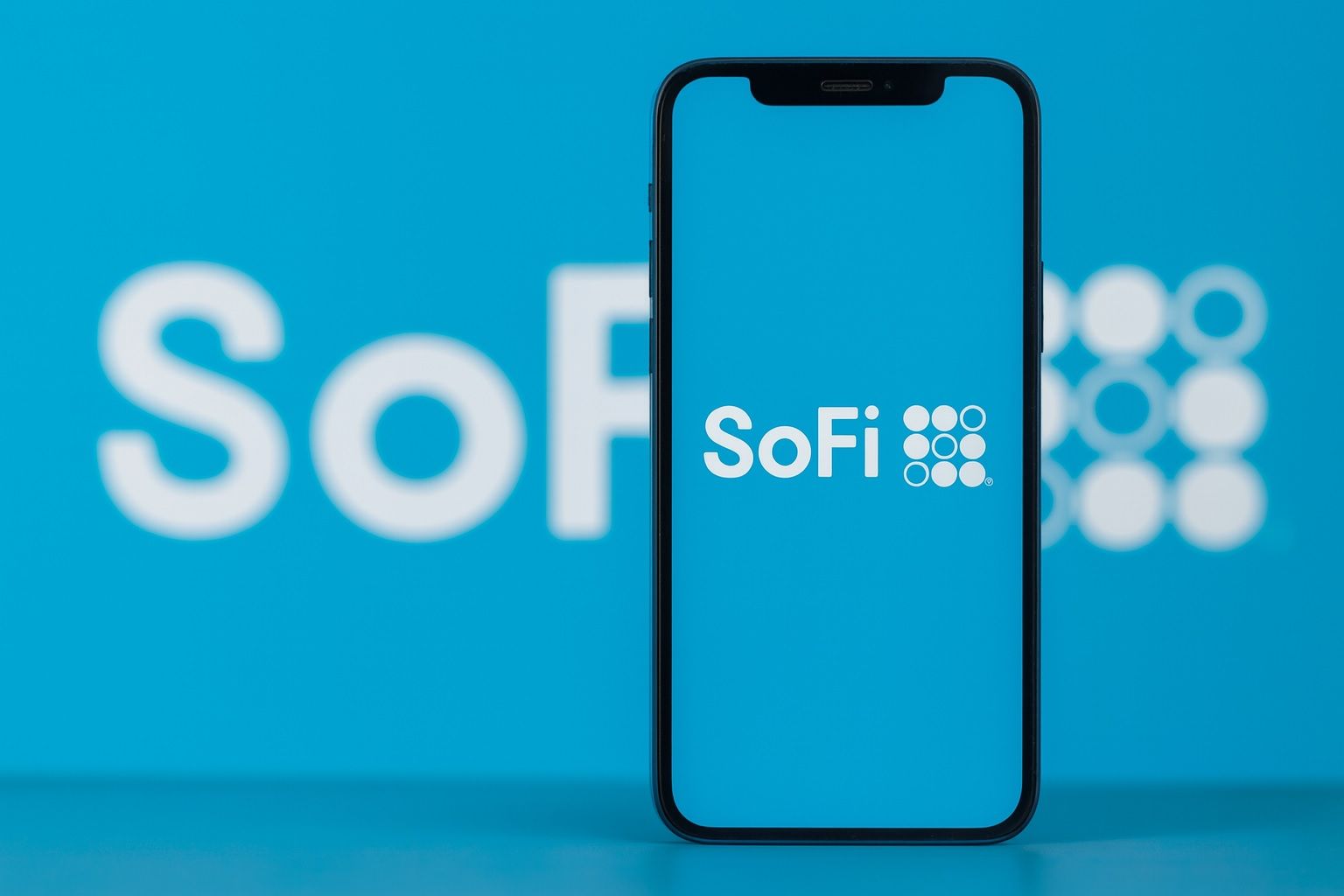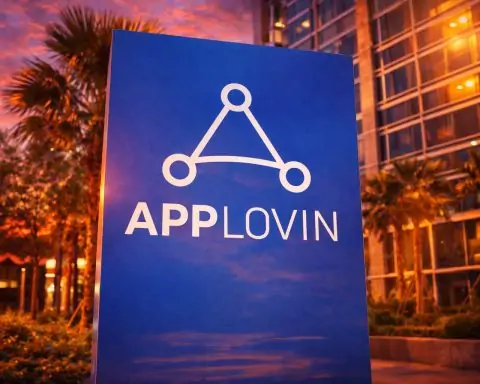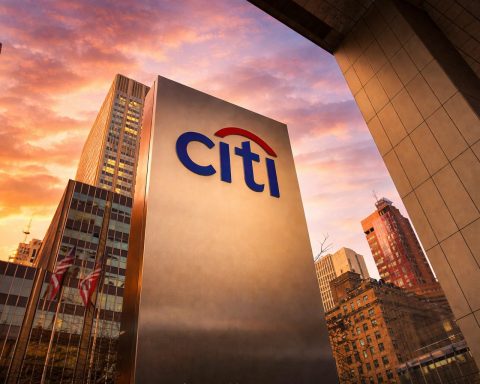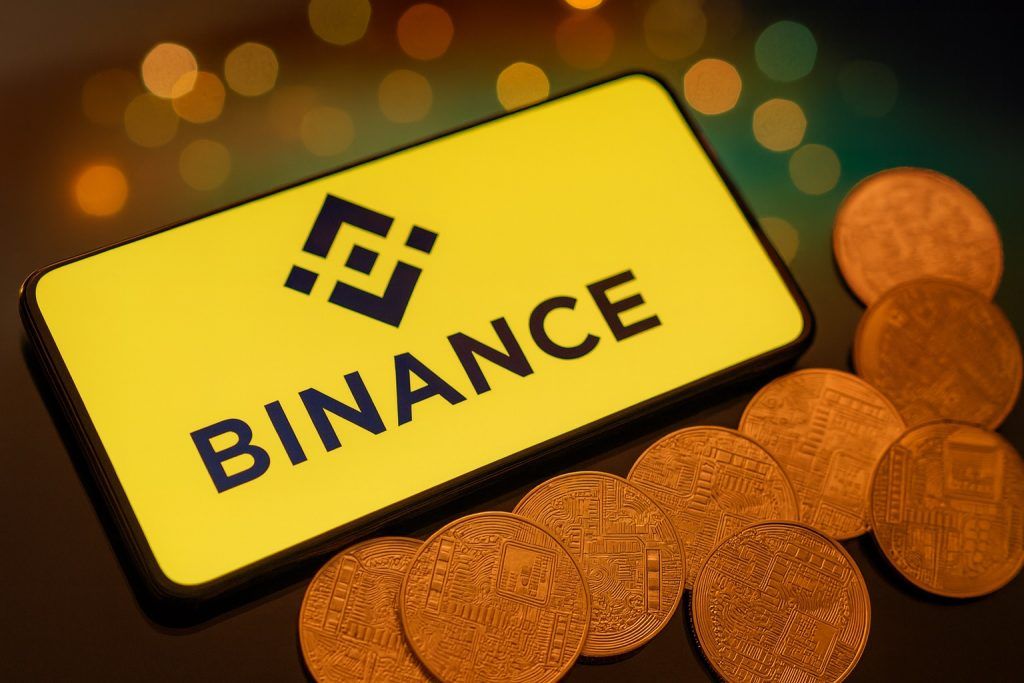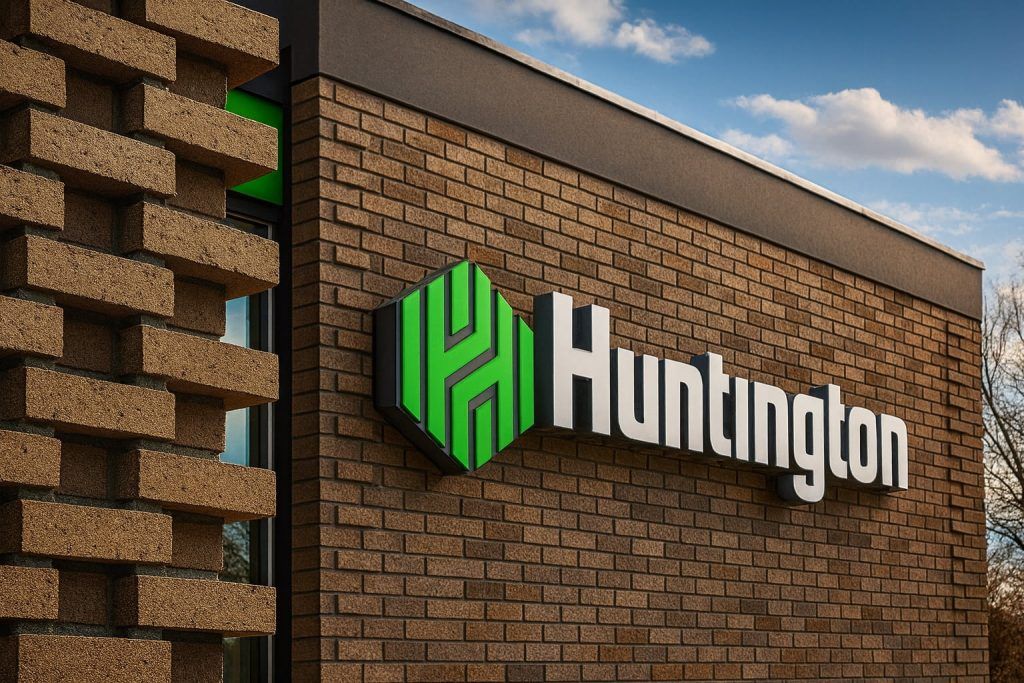October 27, 2025 – SoFi Technologies (NASDAQ: SOFI) has been on a tear in 2025, with its stock surging over 200% in the past year amid a fintech investing frenzy. As the company gears up to report third-quarter earnings on October 28, investors are eager to see if the momentum can continue. Below are the key facts and latest developments surrounding SoFi’s stock and business.
- Blistering Rally: SoFi’s stock has skyrocketed roughly 230% year-over-year, recently trading in the high-$20s to around $30 per share [1]. Shares are up about 80–90% year-to-date, vastly outperforming the broader market [2] [3]. As of midday Oct. 27, SOFI trades near $30, within reach of its all-time high of ~$30.30 set in late September [4] [5].
- Upcoming Earnings Catalyst:Q3 2025 earnings are due tomorrow (Oct. 28) before the market opens. Wall Street forecasts ~$880–890 million in revenue (+ ~27% YoY) and $0.08 EPS (+ ~60% YoY) [6] [7]. SoFi beat expectations last quarter (Q2 EPS $0.08 vs. $0.06) and raised its full-year revenue guidance to ~$3.37 billion (~+30% YoY) [8], so another “beat-and-raise” is anticipated.
- Strong Growth & Profitability: The fintech is rapidly expanding its user base and products. Last quarter, SoFi’s members grew to 11.7 million (adding ~850k in Q2 alone) and products to 17+ million [9]. Revenue jumped 44% in Q2 2025 (to a record $858 million) and the company has now posted seven consecutive quarterly profits, a rarity among high-growth fintechs [10] [11].
- New Products & Partnerships: SoFi continues to broaden its “one-stop-shop” financial platform. In early October, it launched commission-free options trading for retail investors, allowing beginners to trade options with no fees [12]. It also rolled out a new AI-focused ETF (NASDAQ: AGIQ) last month [13]. On the tech side, SoFi’s banking infrastructure unit Galileo joined Amazon’s AWS Partner Network to expand its cloud payments platform’s reach [14]. CEO Anthony Noto has even hinted at enabling blockchain-based international transfers by late 2025 (via a Lightspark partnership) and potentially launching an FDIC-insured stablecoin when regulators allow [15].
- $1.6 Trillion Student Loan Tailwind: SoFi’s roots in student loan refinancing mean policy shifts can be game-changers. This month, reports emerged that Washington is mulling a sale of parts of the $1.6 trillion federal student loan portfolio to private lenders [16] [17]. Such a move, if it materializes, would open a massive market for SoFi’s refinancing business. Already, the resumption of federal student loan payments this fall has boosted SoFi’s loan activity – refinancing volume jumped ~35% last quarter as borrowers exited the payment pause [18]. The mere prospect of a $1.6T loan selloff has “fueled bullish sentiment” that SoFi could dramatically expand its loan book, though no decisions are final [19].
- Analyst Divide – Bulls vs. Bears: After its meteoric rise, experts are split on SoFi’s valuation. Bulls argue the company is executing exceptionally well. Mizuho recently reiterated a “Buy” with a $31 target, citing SoFi’s “strong rate-driven outlook” and benefit from eventual rate cuts [20]. One top investor noted, “SoFi isn’t just another flashy meme-like fintech story – it’s a fast-growing business now proving its financial maturity.” [21] On the other hand, skeptics say much of the good news is priced in. Morgan Stanley values SoFi around $18 (Underweight), warning that at ~50× forward earnings the stock has “a lot of good news” baked in [22]. Similarly, KBW (Keefe, Bruyette & Woods) raised its target to $18 but rates SoFi Underperform, cautioning that the risk/reward “seems skewed negatively… given the premium valuation” [23]. The average analyst price target is in the low $20s (consensus Hold) [24] – well below where the stock trades now.
- Investor & Market Trends: Despite valuation fears, big-name investors are piling in. Cathie Wood’s ARK Invest doubled its SoFi stake last quarter (to ~4.4 million shares) [25]. Some insiders took profits after the huge run-up (executives sold shares in late summer ~$25 [26]), not unusual after a ~3× gain in a year. Retail traders remain very active in SOFI – it’s consistently among the most traded financial stocks [27]. Heavy trading volume and a beta near 1.9 reflect the high volatility: 5–10% swings in a week (or a day) have become almost routine [28] [29]. Broader market trends are also at play: cooling inflation has spurred hopes of Federal Reserve rate cuts, boosting interest-rate-sensitive fintechs. Softer CPI data in September increased the odds of a Fed rate cut at this week’s meeting, which “could spur demand for SoFi’s consumer and personal loans” if borrowing costs drop [30] [31]. In fact, SoFi stock jumped ~2%+ on Oct. 24 after the tame CPI report, as traders bet that “stocks like SOFI are the cleanest proxy for a rate-cut rally.” [32]
- Fintech Peers Context: SoFi’s performance dwarfs most peers in 2025. The stock’s ~80%+ YTD gain stands out even as fintech as a sector rebounds. For instance, buy-now-pay-later player Affirm is up about 47% in 2025, and Latin America-focused DLocal ~20%, while SoFi is the sector standout (up ~65% YTD as of early September, now over 100%) [33]. Legacy fintech giants like PayPal and Block (Square) have struggled this year, delivering more modest returns amid competitive and macro pressures [34]. SoFi’s unique position – a fintech that owns a bank charter and has shown consistent profitability – is giving investors extra conviction that it’s not just another hype stock [35].
Soaring 2025 Rally and Recent Performance
SoFi Technologies has been one of 2025’s hottest stocks. Over the past 12 months, SOFI shares have more than tripled, fueled by booming user growth and investor enthusiasm for fintech. The stock climbed from the single digits in late 2024 to new highs around $30 this fall [36]. In late September, SoFi hit an all-time high near $30.30, capping a rally of about +230% year-over-year [37]. Even after a brief pullback in early October, the stock remains up roughly 80–90% year-to-date [38] [39], dramatically outperforming both the S&P 500 and its fintech industry peers [40].
The ride hasn’t been without volatility. In the first half of October, profit-taking and market jitters triggered a 7-day losing streak, knocking SOFI down ~10–15% from its peak [41]. At one point on Oct. 16, the stock tumbled 5% in a single day amid a broader tech sell-off [42]. Some observers cautioned that “most buyers are already in,” implying the rally could be running out of new fuel [43]. But the dip proved short-lived. On Oct. 20, bulls came roaring back – SoFi spiked nearly 8% intraday after Zacks Investment Research issued a surprise upgrade to “Buy,” coupled with growing optimism ahead of earnings [44]. By mid-week, the stock had recovered to around $28–$29 [45].
Heading into the final week of October, SoFi’s stock is back near its highs. As of Oct. 27, shares trade around $29–$30 – roughly where they were a month ago – giving the company a market capitalization in the low-$30 billions [46]. At these levels, SoFi is valued akin to some established regional banks, underscoring the market’s confidence in its growth story and the rich valuation for a still-young firm [47]. Notably, trading activity remains elevated: tens of millions of shares exchange hands on active days [48], as both fervent bulls and bearish short-sellers rapidly trade on new developments. This heightened interest means high liquidity, but also big swings – SoFi’s beta ~1.9 indicates it’s nearly twice as volatile as the overall market [49] [50]. In short, SoFi’s rally has been stunning, but not for the faint of heart.
Q3 Earnings on Deck – High Expectations
The next major catalyst is imminent: SoFi will report its third-quarter 2025 earnings on Tuesday, October 28 before U.S. markets open. Anticipation is running high. Wall Street analysts universally expect robust growth in the quarter. Consensus estimates call for around $880–$889 million in revenue and earnings of $0.08 per share [51] [52]. Hitting those targets would mark roughly +27–30% higher revenue and +60% higher EPS versus Q3 of last year [53] [54] – an impressive growth rate for a company of SoFi’s size.
Crucially, SoFi has a track record of beating forecasts in recent quarters. In Q2 2025, the company delivered $0.08 EPS, handily topping the $0.06 expected, on record adjusted net revenue of $858 million (+44% YoY) [55]. Management then raised full-year guidance on the Q2 call, upping 2025 revenue expectations to about $3.37 billion (roughly +30% YoY) [56] and expressing confidence in sustained momentum across its segments. This “beat-and-raise” performance helped propel the stock to new highs over the summer. It also means the bar is higher for Q3 – investors are looking for another strong beat or at least signs that growth isn’t slowing.
Analysts will be zeroed in on a few key metrics in the Q3 report. Lending and member growth will be one focus. SoFi’s strategy of offering a full suite of products (lending, banking, investing, etc.) has been driving accelerating user acquisition. Last quarter, SoFi added ~850,000 new members (+34% YoY), bringing total members to 11.7 million [57]. Those members are using more of SoFi’s services over time – the company counted over 17 million total products (+34% YoY) across loans, accounts, cards, and investments as of Q2 [58]. Investors will want to see that these trends continued through Q3, indicating high engagement and cross-selling success (which in turn boosts lifetime customer value).
Another focal point is profitability and guidance. SoFi achieved a milestone by turning GAAP profitable in 2024, and it hasn’t looked back – it has now notched seven consecutive profitable quarters as of Q2 2025 [59]. For Q3, the projected $0.08 EPS (up from $0.05 a year ago) would further cement that bottom-line improvement [60] [61]. Any upside surprise on earnings (or margin expansion) could assuage valuation concerns. Moreover, the Street will dissect any updates to full-year guidance. Currently, SoFi’s outlook is ~$3.38B in adjusted revenue and ~$960M in adjusted EBITDA for 2025 [62]. Given the strong first half, analysts are watching if management raises guidance yet again. “The company’s history of beating and raising expectations” is one reason J.P. Morgan’s Reginald Smith recently bumped his price target up to $26 (Neutral rating) [63]. If Noto and team signal even higher confidence for Q4 and beyond, it could justify some of the stock’s rich multiples. Conversely, any hint of a slowdown or cautious outlook could spur a pullback.
Fintech Expansion: New Offerings and Partnerships
Fueling SoFi’s growth story is its continual expansion into new products and markets. The company’s mantra is to become a “one-stop shop” for personal finance, and recent moves show that in action. In October, SoFi made a splash by launching no-commission options trading for its brokerage customers [64]. This move opens the door for retail investors (even beginners) to trade options like covered calls and puts with zero fees. By adding options alongside stocks, ETFs, crypto, and other investments, SoFi aims to increase engagement on its platform – keeping customers within the SoFi ecosystem for more of their trading activity. It’s a similar playbook to Robinhood’s, but SoFi is leveraging its broader financial suite to cross-sell the new feature (for example, using cash from a SoFi bank account to fund an options trade). Early reception from SoFi’s user community appears positive, as the feature targets a more financially savvy segment of its growing member base.
Another new offering came last month with the debut of SoFi’s own AI-driven ETF. Branded the SoFi Select 500 AI ETF (ticker: $AIQ), this fund focuses on companies poised to benefit from next-gen tech like artificial intelligence [65]. The launch taps into two hot trends – thematic AI investing and SoFi’s in-house investment products. It joins SoFi’s roster of ETFs (which already includes funds like SoFi Gig Economy ETF and SoFi Next 500 ETF) and gives the company more proprietary investment vehicles to offer members. While ETFs won’t move the revenue needle much in the short term, they enhance SoFi’s image as an innovative fintech and could attract a different set of customers interested in AI and tech themes.
On the partnerships front, SoFi’s technology arm is extending its reach. In mid-October, SoFi’s subsidiary Galileo – which provides payments and core banking API services to other fintechs – announced it has joined the Amazon Web Services (AWS) Partner Network [66]. This is a strategic move to make Galileo’s cloud-based platform easily accessible to banks and fintech companies globally via AWS. By teaming up with Amazon’s cloud, Galileo can scale faster and integrate with enterprise clients that rely on AWS infrastructure. SoFi’s management noted that Galileo has been experiencing “record” growth as more institutions upgrade their digital banking capabilities [67]. The AWS partnership could further boost Galileo’s client pipeline, which ultimately benefits SoFi’s revenue (Galileo generates B2B tech fees). It’s worth noting that Galileo’s longtime CEO stepped down in October amid this momentum, signaling a leadership transition as the unit enters a new expansion phase [68].
Meanwhile, SoFi is pushing into new frontiers of fintech. Cryptocurrency and blockchain initiatives are on the horizon. CEO Anthony Noto revealed plans for SoFi to enable blockchain-based international money transfers by late 2025, in partnership with Lightspark (a Bitcoin Lightning Network startup) [69]. The idea is to leverage crypto’s speed and low cost for cross-border remittances, which could make SoFi a more attractive platform for the globally connected customer base. Additionally, Noto has floated the possibility of SoFi launching its own stablecoin (a cryptocurrency pegged to the dollar) that would be FDIC-insured, once regulators give the green light [70]. If eventually approved, a SoFi stablecoin could be used by customers for payments and transfers within the SoFi ecosystem, further blurring the line between traditional banking and digital assets. While these crypto plans are early-stage (and regulatory dependent), they demonstrate SoFi’s ambition to stay on the cutting edge of fintech innovation.
All these expansions – from options trading to AI investing to blockchain transfers – serve a common goal: deepen customer engagement and lifetime value. SoFi’s average products per member continue to rise, a metric the company highlights as evidence that its cross-selling strategy works [71]. By offering a rich menu of services under one roof (and a sleek app), SoFi increases the odds that a student-loan customer also gets a SoFi credit card, invests in a SoFi ETF, or uses SoFi for direct deposit and bill pay. This “financial supermarket” model, enabled by SoFi’s bank charter and technology platform, is what management believes will drive profitable growth at scale. Investors will be looking at Q3 results for any signs that new offerings are attracting users or boosting engagement (for example, an uptick in assets under management from the new ETF or higher transaction volumes from options trading).
$1.6 Trillion Question: Student Loan Opportunity
One of the most buzzed-about wildcards for SoFi is the evolving situation in the student loan market, which strikes at the core of SoFi’s original business. In early October, news broke that the U.S. government is considering an unprecedented move: selling off portions of its $1.6 trillion federal student loan portfolio to private players [72]. This report, first surfaced by Politico and Reuters, sent shockwaves through the student lending industry. For SoFi, which made its name refinancing student loans, the implications are huge. If even a slice of that federal loan book were opened to refinancing or private servicing, it represents a massive addressable market – potentially on the order of hundreds of billions of dollars that SoFi and peers could vie for [73].
So far, the idea is just under discussion at senior levels of the Education and Treasury departments, and no decisions have been made [74] [75]. It could face political and logistical hurdles. But just the possibility of tapping into federal loans has “sparked a frenzy” around SoFi’s stock, according to analysts [76]. Bulls see it as a once-in-a-generation catalyst: “a $1.6 trillion opportunity” that could turbocharge SoFi’s lending volume [77]. SoFi’s CEO hasn’t publicly commented in detail, but the company is no doubt watching closely. If the government were to proceed, SoFi would be well-positioned given its experience in student loan refis and its bank funding (which gives it lower cost of capital than non-bank lenders).
Even aside from that hypothetical scenario, tailwinds have returned to SoFi’s student loan business this year. Recall that during the pandemic, federal student loan payments were paused for over three years (a headwind for SoFi, as borrowers had little incentive to refinance). That pause officially ended in late summer 2025. Borrowers must now resume payments on their federal student loans starting this fall. As expected, many are looking to refinance into lower-rate or better-term loans – and SoFi is capturing that demand. In Q2, as payments restart loomed, SoFi’s student loan refinancing volume jumped about 35% quarter-over-quarter [78]. Management noted a clear uptick in applications from high-income borrowers seeking to lock in fixed rates and reduce their monthly burden. This trend likely continued in Q3 now that payments have actually resumed (October was the first month many borrowers received bills). More refinancing volume means more high-quality loans on SoFi’s balance sheet and interest income going forward.
Investors will listen for any commentary on early Q4 trends as well, since the student loan restart is just ramping up. The company raised its full-year guidance partly because it anticipated a tailwind from the payment restart [79]. If refinancing activity is stronger than expected, it could prompt SoFi to again boost its outlook. Conversely, there’s some uncertainty – new federal income-driven repayment plans and forgiveness proposals could temper how many borrowers ultimately refinance privately. SoFi must navigate these cross-currents. But overall, after years of headwinds from Washington’s payment moratorium, the policy environment has flipped to a positive for SoFi, giving the stock an extra jolt of enthusiasm in recent months [80].
Wall Street Sentiment: Divergent Views
With SoFi’s stock up so dramatically this year, Wall Street analysts have starkly divergent views on what comes next. It’s a classic bull-bear tussle playing out in real time, and tomorrow’s earnings could tilt the debate.
On the bullish side, several analysts argue that SoFi is only beginning to realize its potential. The company has executed well, beating targets and scaling its user base, which justifies a premium valuation in their view. Mizuho’s Dan Dolev is a prominent bull – this month he reiterated his Buy rating and hiked his price target to $31 (from $26) [81]. Dolev points to SoFi’s “strong rate-sensitive outlook,” noting that among fintechs, SoFi is uniquely positioned to benefit when interest rates eventually decline [82]. (Lower rates can boost SoFi’s loan refinancing and make its cost of capital cheaper.) He believes SoFi’s growth and earnings trajectory warrant a higher valuation relative to peers. Some independent investors echo this optimism. Michael Wiggins De Oliveira, a top-ranked financial commentator, recently proclaimed that “SoFi isn’t just another flashy meme-like fintech story – it’s a fast-growing business now proving its financial maturity.” [83] In other words, SoFi has graduated from story stock to serious contender, in the bulls’ eyes.
Even new technology is hopping on the bandwagon: TipRanks’ AI stock analyst recently gave SoFi an “Outperform” rating with a computed price target of $32 [84]. The AI analyst cited SoFi’s strong financial performance and bullish technical signals, while only “slightly” flagging valuation concerns. This algorithmic vote of confidence underscores the positive data trends surrounding SoFi – rapid growth, improving profitability, and momentum – which bulls believe can continue.
However, the bearish or cautious camp is equally vocal, mainly harping on one thing: valuation, valuation, valuation. They argue that SoFi’s stock price has run far ahead of its fundamentals. At ~$30 a share, SoFi’s market cap is around $30 billion and the stock trades at nearly 50 times forward earnings, an earnings multiple more befitting Big Tech than a mid-cap lender. Morgan Stanley has been a leading bear; the firm pegs SoFi’s fair value around $18 – roughly 40% below the current price [85]. Morgan Stanley analysts maintain an Underweight (Sell) rating, warning that at this valuation, “a lot of good news” is already baked in to the stock [86]. In their view, any hiccup – a growth slowdown, a weaker economy, rising credit losses – could trigger a sharp correction, because investors have priced SoFi for perfection.
Similarly, Keefe, Bruyette & Woods (KBW) has a dour view even while acknowledging SoFi’s progress. KBW’s analyst Tim Switzer recently raised his price target to $18 (from $14) after tweaking estimates, but reiterated his Sell rating [87] [88]. Switzer actually projects SoFi’s 2025 EBITDA will beat management’s guidance (he forecasts $998M vs. $960M guided) [89], and sees EPS rising in 2026. Yet he remains bearish long-term, stating the risk/reward “seems skewed negatively” given SoFi’s premium trading multiples [90]. In other words, even good execution may not push the stock much higher, but any stumble could hurt it – a asymmetry that worries the bears.
The upshot is a mixed analyst consensus. Out of about 15–20 analysts, the average rating is a Hold, and the average price target sits in the low-$20s [91]. That’s well below the current price, reflecting that many on Wall Street think the stock’s 2025 rally has overextended. However, there’s a wide dispersion: a handful of Buy ratings with targets around $30+, and several Sells in the teens, with not much in between. This debate sets the stage for the Q3 earnings reaction – a big beat and confident guidance might vindicate the bulls and prompt some bears to lift targets, whereas any disappointment could embolden the skeptics who’ve warned the valuation leaves no margin for error.
Broader Market Context and Fintech Comparisons
SoFi’s story in 2025 doesn’t exist in a vacuum – it’s part of a larger fintech resurgence as well as a shifting macroeconomic backdrop. After a rough 2022–2023 for fintech stocks (when rising interest rates and recession fears hit high-growth tech and finance companies hard), 2025 has seen a rebound in the sector [92]. Investors have rotated back into growth-oriented fintech names, especially as signs point to the Federal Reserve nearing the end of its tightening cycle. With inflation moderating and the Fed contemplating rate cuts perhaps as soon as the end of this year, the outlook has brightened for digital lenders and neo-banks that thrive on lower borrowing costs [93] [94].
SoFi has been a standout winner in this environment, but other fintechs have also rallied – albeit not to the same degree. Affirm (AFRM), a buy-now-pay-later provider, has climbed roughly 47% year-to-date after beating earnings and showing a path toward profitability [95]. Payments processor DLocal (DLO) is up about 20% YTD (after a 40% post-earnings pop in August) [96]. By early September, SoFi was already up 65% YTD – making it “the sector standout” – and it has added to those gains since [97]. Meanwhile, more established fintech giants have lagged. PayPal (PYPL), facing growth challenges, has seen much smaller stock gains in 2025 (and was even down year-over-year at one point). Block, Inc. (SQ) – formerly Square – has likewise struggled amid slowing growth and profitability concerns. In fact, analysts note that SoFi has “dramatically outperformed fintech peers like PayPal, Block, and Affirm” this year [98]. Part of the reason is that those incumbents are battling their own issues (competition, market saturation, leadership changes), whereas SoFi is a relatively newer player still in a high-growth phase with expanding market share.
Another differentiator frequently cited is SoFi’s bank charter. Unlike most fintechs, SoFi obtained a national bank charter (through its acquisition of Golden Pacific Bancorp), which allows it to hold customer deposits and fund loans with those deposits. This gives SoFi a stable, low-cost source of funding (customer deposits) compared to fintech rivals that rely on warehouse lines or third-party banks. It also means SoFi is subject to bank regulations and oversight, but the upside is evident: SoFi’s cost of capital and interest margins have improved, helping it achieve GAAP profitability. This bank advantage, combined with SoFi’s end-to-end product suite, has made some investors view it as a potential “digital Wells Fargo” or an integrated financial supermarket for the next generation. By contrast, a company like Affirm is essentially a specialty lender dependent on external funding and has never been profitable – a much riskier profile in a high-rate environment. SoFi’s relative strength in fundamentals (growing revenue ~30% with actual profits) has given it an edge as investors sift through which fintechs are built to last.
Macro trends are also crucial. Interest rates and the economy directly influence SoFi’s business. So far, U.S. economic growth has been resilient in 2025, and consumer spending remains solid – a positive for SoFi’s banking and credit card segments (more deposits, more swipe fee revenue) [99]. If the Fed begins cutting rates as expected in coming months, it could unleash pent-up demand for loans (mortgages, personal loans, refinances). SoFi would likely benefit from such a scenario – as one market commentator on Stocktwits put it, SoFi and similar fintech stocks “are the cleanest proxy for a rate-cut rally” [100]. Lower rates could also ease pressure on SoFi’s own loan yields and improve its net interest margin if funding costs drop faster than lending rates. However, a flip side is if the economy slows or goes into recession, credit losses could tick up. For now, credit quality at SoFi has remained healthy, and the company has diversified its loan mix (personal loans, student loans, home loans) to manage risk. The broader stock market hitting new highs in 2025 has certainly provided a favorable backdrop for a high-beta stock like SOFI. The question is whether macro tailwinds (like rate cuts) will arrive in time to sustain SoFi’s rally into 2026, or if investors will grow more cautious.
The Bottom Line
SoFi Technologies has ridden a perfect wave of strong execution, savvy expansion, and favorable market trends to become one of this year’s top-performing stocks. The company has transitioned from a niche student lender into a diversified fintech powerhouse offering banking, investing, and tech services – and importantly, it’s now profitable and scaling fast. This transformation has not gone unnoticed: enthusiastic retail investors and renowned tech funds alike have poured into the stock, betting that SoFi could be a long-term winner in digital finance. As a result, SoFi’s market value has ballooned and its stock price is now testing historic highs.
Now comes the moment of truth: the Q3 earnings report and outlook will either validate the hype or test the faith of those chasing this remarkable rally. Key things to watch on Oct. 28 include whether SoFi can beat the ambitious $0.08 EPS, how its user growth and loan volumes are trending, and if management raises guidance for the full year. Any upside surprise – say, stronger member additions or improved margins – could propel the stock even higher, perhaps convincing more of Wall Street that SoFi’s premium valuation is deserved. Conversely, if results merely meet expectations or if guidance is cautious (for example, citing economic uncertainty or higher expenses), the stock could see a pullback given how much optimism is baked in.
Longer term, the ingredients that drove SoFi’s 2025 surge remain in play. The potential opening of the $1.6 trillion federal loan market, the cross-selling of new products like options and ETFs, and the likelihood of a friendlier interest rate environment all offer tantalizing upside avenues. But execution will need to stay nearly flawless to justify further gains on top of a 230% yearly increase. SoFi has to navigate competitive pressures, regulatory scrutiny (as it grows as a bank), and the inherent volatility of being a retail favorite.
For now, the SoFi saga is a tale of remarkable growth and investor zeal. It’s accessible enough for casual observers – a fintech disrupting banking – yet complex enough to keep seasoned investors analyzing every development. As Q3 earnings arrive and the fintech continues to evolve, one thing is certain: SoFi has the market’s full attention. Whether you’re a believer or a skeptic, SoFi has become a stock to watch in the fintech space, and the coming days will help determine if this high-flyer’s journey keeps defying gravity or finally cools off.
Sources:
- Yahoo Finance / GuruFocus – “SoFi Q3 Earnings Preview: Can Q3 Results Justify the High-Growth Valuation?” (Oct 23, 2025) [101] [102]
- TipRanks – “SoFi (SOFI) Is About to Report Q3 Earnings… Here Is What to Expect” (Oct 27, 2025) [103] [104]
- TS² (TechStock²) – “SoFi Stock Skyrockets 230% in 2025 as Earnings Loom – $1.6 Trillion Opportunity Sparks Frenzy” (Oct 22, 2025) [105] [106]
- TechStock² – “SoFi’s Roller-Coaster Rally: Fintech Stock Soars 230% in 2025 – What’s Next for SOFI?” (Oct 20, 2025) [107] [108]
- Reuters – “US weighs selling parts of $1.6 trillion federal student loan portfolio…” (Oct 7, 2025) [109]
- Stocktwits News – “SOFI Stock Gains Spotlight as Softer CPI Data Boosts Rate Cut Expectations” (Oct 24, 2025) [110] [111]
- MarketBeat – “3 Fintech Stocks Beating the Market in 2025” (Sept 8, 2025) [112] [113]
References
1. ts2.tech, 2. www.gurufocus.com, 3. www.tipranks.com, 4. markets.chroniclejournal.com, 5. markets.chroniclejournal.com, 6. ts2.tech, 7. stocktwits.com, 8. ts2.tech, 9. ts2.tech, 10. ts2.tech, 11. www.ainvest.com, 12. ts2.tech, 13. ts2.tech, 14. ts2.tech, 15. ts2.tech, 16. ts2.tech, 17. www.reuters.com, 18. ts2.tech, 19. ts2.tech, 20. ts2.tech, 21. ts2.tech, 22. ts2.tech, 23. ts2.tech, 24. ts2.tech, 25. ts2.tech, 26. ts2.tech, 27. ts2.tech, 28. ts2.tech, 29. ts2.tech, 30. stocktwits.com, 31. stocktwits.com, 32. stocktwits.com, 33. www.marketbeat.com, 34. ts2.tech, 35. ts2.tech, 36. ts2.tech, 37. ts2.tech, 38. www.gurufocus.com, 39. www.tipranks.com, 40. ts2.tech, 41. ts2.tech, 42. ts2.tech, 43. ts2.tech, 44. ts2.tech, 45. ts2.tech, 46. ts2.tech, 47. ts2.tech, 48. ts2.tech, 49. ts2.tech, 50. ts2.tech, 51. ts2.tech, 52. stocktwits.com, 53. ts2.tech, 54. ts2.tech, 55. www.ainvest.com, 56. ts2.tech, 57. ts2.tech, 58. ts2.tech, 59. ts2.tech, 60. www.tipranks.com, 61. www.tipranks.com, 62. www.gurufocus.com, 63. stocktwits.com, 64. ts2.tech, 65. ts2.tech, 66. ts2.tech, 67. ts2.tech, 68. ts2.tech, 69. ts2.tech, 70. ts2.tech, 71. www.gurufocus.com, 72. www.reuters.com, 73. ts2.tech, 74. www.reuters.com, 75. www.reuters.com, 76. ts2.tech, 77. ts2.tech, 78. ts2.tech, 79. ts2.tech, 80. ts2.tech, 81. www.tipranks.com, 82. www.tipranks.com, 83. ts2.tech, 84. www.tipranks.com, 85. ts2.tech, 86. ts2.tech, 87. www.tipranks.com, 88. www.tipranks.com, 89. www.tipranks.com, 90. ts2.tech, 91. ts2.tech, 92. www.marketbeat.com, 93. stocktwits.com, 94. stocktwits.com, 95. www.marketbeat.com, 96. www.marketbeat.com, 97. www.marketbeat.com, 98. ts2.tech, 99. stocktwits.com, 100. stocktwits.com, 101. www.gurufocus.com, 102. www.gurufocus.com, 103. www.tipranks.com, 104. www.tipranks.com, 105. ts2.tech, 106. ts2.tech, 107. ts2.tech, 108. ts2.tech, 109. www.reuters.com, 110. stocktwits.com, 111. stocktwits.com, 112. www.marketbeat.com, 113. www.marketbeat.com
